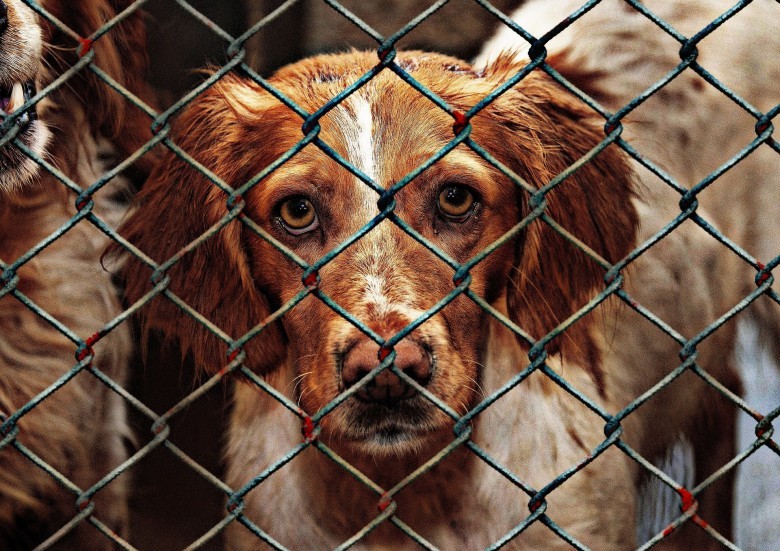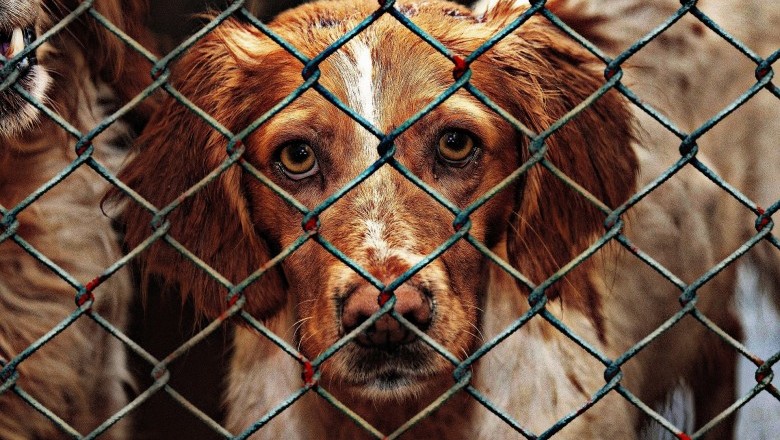
Rescue Dog Training -- How to Make Your Timid, Shy Or Distrustful Rescue Dog Sociable and Friendly
So you opened your heart and home to a shy, timid rescue dog. What can you do to help your new pet adjust and become an involved member of the family? I will assume you already had your dog checked out by a veterinarian to make sure the behavior isnt due to an illness or injury.
First, be thankful you dont have an aggressive dog. While both behaviors are reparable, at least correcting timidity doesnt have the same urgency as correcting an aggressive dog that may exhibit biting at any time. Also remember that dogs by nature are social animals that thrive in a pack. So something occurred in your dogs life to make him distrustful, even fearful. You have his natural instincts working in your favor.
The first thing youll need is a large dose of patience. And, you need to equip yourself with the proper training techniques to correct the behavior. Do your best to make sure family members dont make fast motions towards or loud noise near your dog. Approach quietly, slowly and with your hand held out below his nose so he can sniff you. Dogs rely on the sense of smell to decide if a threat is approaching. As he sniffs you, face to one side since eye-to-eye contact is often perceived as aggression by dogs.
Timid dogs invariably lack confidence. Your job is to instill confidence and reassurance back into your dog. It may seem incongruous, but even though your dog shies away and may even avoid you, he also will not like being alone. As pack animals, they instinctively want to follow where you go. So, being left alone may trigger anxiety.
Since this is inevitable (being left alone), you would do well to ease him into the inevitable. Before your long day away happens, try leaving him alone for several moments. Return and praise him and reward him with a treat. Do this as often as your schedule permits. Every time you return, heap praise upon your dog (quietly of course) and slip him a treat. This will help your dog build confidence that you will return eventually whenever you leave and soon he will associate your return with a reward.
Dogs have infinite patience; once they are certain an anticipated outcome will happen.
Food is a great motivator that can work for you. Dogs do not normally eat or even approach food when they are fearful or anxious. You can use this attribute to build trust and create a bond with your dog.
Try tossing a tidbit a foot or so in front of your dog (slowly). Then walk away until he conjures up the courage to approach the food and eat it. Next time approach the dog a little closer and toss the food again at a distance that causes him to get up to reach it. Your goal is to ultimately get close enough that he will feel comfortable enough to eat a morsel out of your hand. Be sure to praise him each time he eats the food. Always try to have your dog associate you with praise, not punishment.
This may seem counter intuitive, but do not pity your dog. Dogs are very adept at sensing moods by observing body language. The last thing an anxious follower needs is an anxiety ridden leader. You need to exhibit confidence if you are to help your dog overcome his fear.
Another technique for curing timidity in a dog that seems counter intuitive is crate training. Boundaries help a dog to feel secure and safe.
Make sure it is placed away from commotion or places of congregating. In the beginning, associate the crate with treats and toys and praise. Leave the door open during the day and he will soon use it as a place to relax. When you leave for an extended period, close the door. Crating a dog is not cruel. It will come to represent a safe haven for your dog.
Dont reinforce the fearful behavior whenever it manifests by coddling him and babying him. This will only instill in the dog the impression that his behavior is acceptable and can evoke attention from his leader. Always ignore the behavior and eventually he will learn he doesnt get what he wants from you when he cowers.
When he does start to venture outside of his comfort zone, offer some praise and a treat. Dont overdo it, but make sure he knows you approve when he exhibits courage. Positive reinforcement goes a long way to help your dog overcome fear.
When he has made some progress facing his demons, take steps to help him socialize with other creatures - dogs and people. But, be sure to allow him to approach them on his terms and time frame. Dont rush the process. Keep him leashed and approach only other leashed dogs so you have some control. Do what you can to create a pleasant, non-threatening experience for him. Eventually he will learn that he can interact with other dogs and people without being harmed.
Routines are a dogs second best friend. Knowing what can be expected significantly reduces anxiety in a dog. Make exercise part of your routine. It relieves tension and wears the dog out so he doesnt have the energy it takes to be fearful. These are times when you can also strengthen your bond with your dog, which leads to trust.
These are some very useful techniques that will help you to transform your fearful rescue dog into a true family member who interacts, socializes, pleases, and provides you and your family with years of love and devotion. Which is what dogs do better than any other creature.
Make sure you are a knowledgeable dog owner who has at his disposal excellent instruction that will help you correct any negative behavior your dog may exhibit during his long, happy life. Visit my site referenced below to review the two resources I found to be most useful.
I use two excellent resources to make sure I am an informed dog owner - The D.I.Y. Dog Training Manual and the Dog Lovers Membership Site. Learn more by visiting my site referenced below.
Bob Hunsicker is simply a dog lover, who strongly encourages all interested in bringing a dog into their home, to consider a rescue dog. They are truly creatures who deserve a second chance to become a loving, devoted member of a home.
Visit his blog at
DogsRpeople2and send him an email so you can get permission to submit posts (youll need a gmail email account from Google).
After evaluating dozens of resources for training older dogs, particularly rescue dogs, I recommend two that have provided me the knowledge to transform my third rescue dog into a wonderful family member.
Visit my site to learn more about these two extremely effective training resources...
Do-It-Yourself Dog Training Manual



























